Are you looking to revamp your kitchen with a touch of warmth and elegance? Natural wood kitchen cabinets offer a timeless appeal that can transform any kitchen space. In this article, we will explore the various styles of natural wood kitchen cabinets, highlighting their benefits, popular wood types, design styles, maintenance tips, cost considerations, and environmental sustainability. By the end, you’ll have a deeper understanding of how natural wood cabinets can enhance your kitchen’s aesthetics and functionality.
The kitchen is often considered the heart of a home, and the choice of cabinetry plays a significant role in defining its overall style and ambiance. Natural wood kitchen cabinets have gained immense popularity due to their versatility and natural beauty. Let’s delve into the world of natural wood kitchen cabinets and discover the numerous options available to elevate your kitchen design.
Table of Contents
Benefits of Natural Wood Kitchen Cabinets
Natural wood kitchen cabinets offer a plethora of benefits that make them a preferred choice among homeowners. Firstly, they bring warmth and character to the kitchen, creating a cozy and inviting atmosphere. Wood cabinets also provide durability and strength, ensuring they withstand daily wear and tear.
Moreover, natural wood kitchen cabinets offer excellent versatility in terms of finishing options. From stained to painted, you can choose the finish that best complements your kitchen’s style. Additionally, wood cabinets can be easily repaired and refinished, making them a long-term investment.
Popular Wood Types for Kitchen Cabinets
When it comes to natural wood kitchen cabinets, several wood types are commonly used due to their distinct characteristics. Let’s explore three popular wood types:
1. Oak
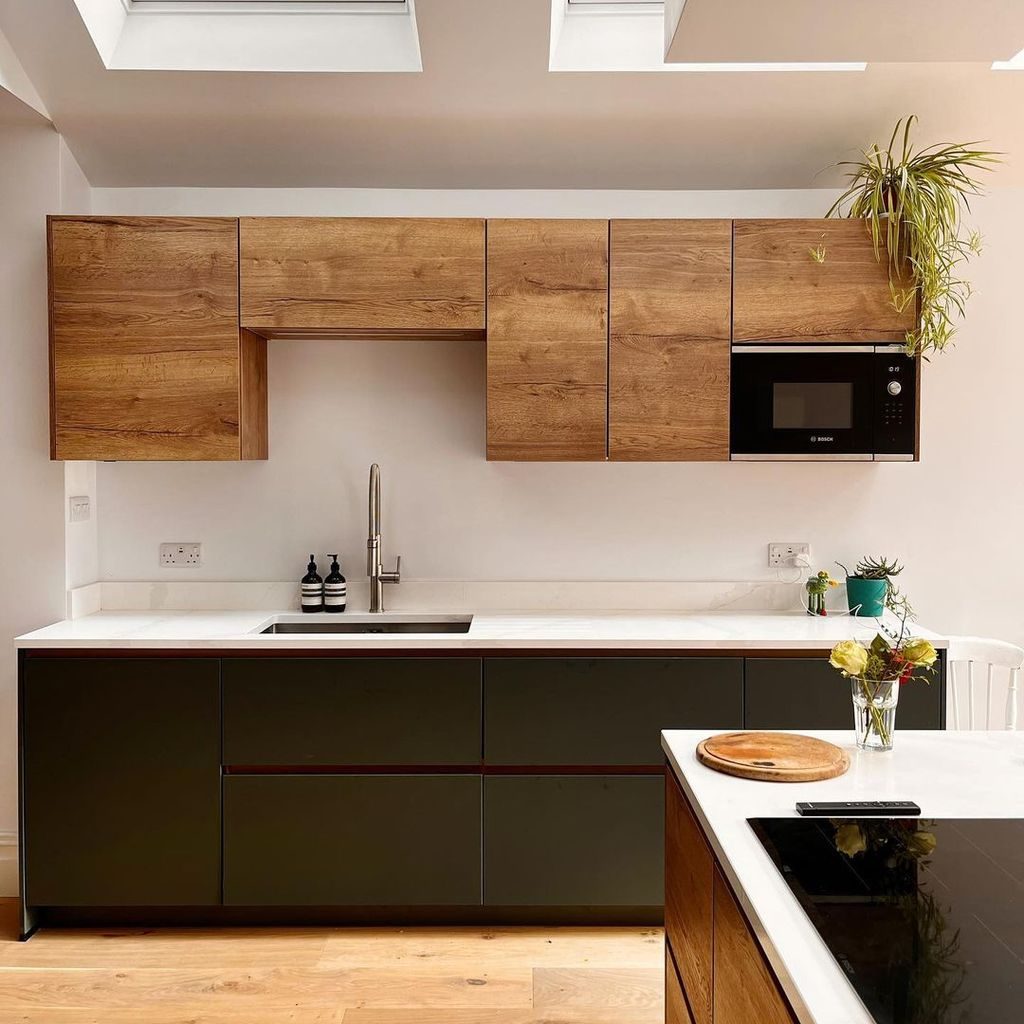
Oak Wood Kitchen Cabinets from @people_andspaces
Oak is a highly durable and resilient wood that boasts a distinctive grain pattern. Its natural strength makes it resistant to dents and scratches, ideal for busy kitchens. Oak cabinets are available in various finishes, ranging from light to dark shades, allowing you to achieve the desired aesthetic.
Pros of Oak Natural Wood Kitchen Cabinets:
- Durability: Oak wood is known for its exceptional durability, making it a long-lasting choice for kitchen cabinets. It can withstand daily wear and tear, including scratches and dents, ensuring your cabinets maintain their beauty for years.
- Natural Beauty: Oak wood showcases a distinctive and appealing grain pattern that adds character and warmth to your kitchen. The natural variations in color and grain give oak cabinets a unique and visually pleasing aesthetic.
- Versatility: Oak wood is highly versatile and can be easily stained or painted to achieve different finishes and colors. Whether you prefer a light, natural look or a darker, more dramatic appearance, oak cabinets can be customized to suit your design preferences.
- Wide Availability: Oak is one of the most readily available hardwoods, making it relatively affordable compared to other wood species. It offers a cost-effective option for homeowners who desire the beauty of wood cabinets without breaking the budget.
- Easy Maintenance: Oak wood cabinets are relatively low-maintenance. Regular cleaning with a mild detergent and occasional polishing can keep them looking their best. Additionally, oak is less prone to water damage compared to other wood types.
Cons of Oak Natural Wood Kitchen Cabinets:
- Weight: Oak is a dense and heavy wood, which means that oak cabinets may be heavier compared to cabinets made from other wood species. This can make installation more challenging and may require additional support.
- Prone to Scratches: While oak wood is generally durable, it is not entirely scratch-resistant. Lighter oak finishes may show scratches more prominently, especially in high-traffic areas. However, minor scratches can often be easily repaired or concealed.
- Natural Color Variations: The natural color variations in oak wood can be both a pro and a con. While it adds character and charm, it may make it slightly more challenging to achieve a consistent color throughout your cabinets. If uniformity is a priority, you may need to consider staining or selecting a specific oak variant.
- Susceptible to Moisture: While oak is more resistant to water damage compared to softer woods, it is still susceptible to moisture if not properly sealed. It is essential to promptly wipe up any spills to prevent water from penetrating the wood and causing warping or discoloration.
- Trend Considerations: As with any design element, trends can evolve over time. While oak cabinets have a timeless appeal, it’s essential to consider if the current style aligns with your long-term aesthetic vision.
Considering these pros and cons will help you make an informed decision about whether oak wood kitchen cabinets are the right choice for your kitchen. Remember to assess your specific needs, preferences, and budget before finalizing your cabinet selection.
2. Maple
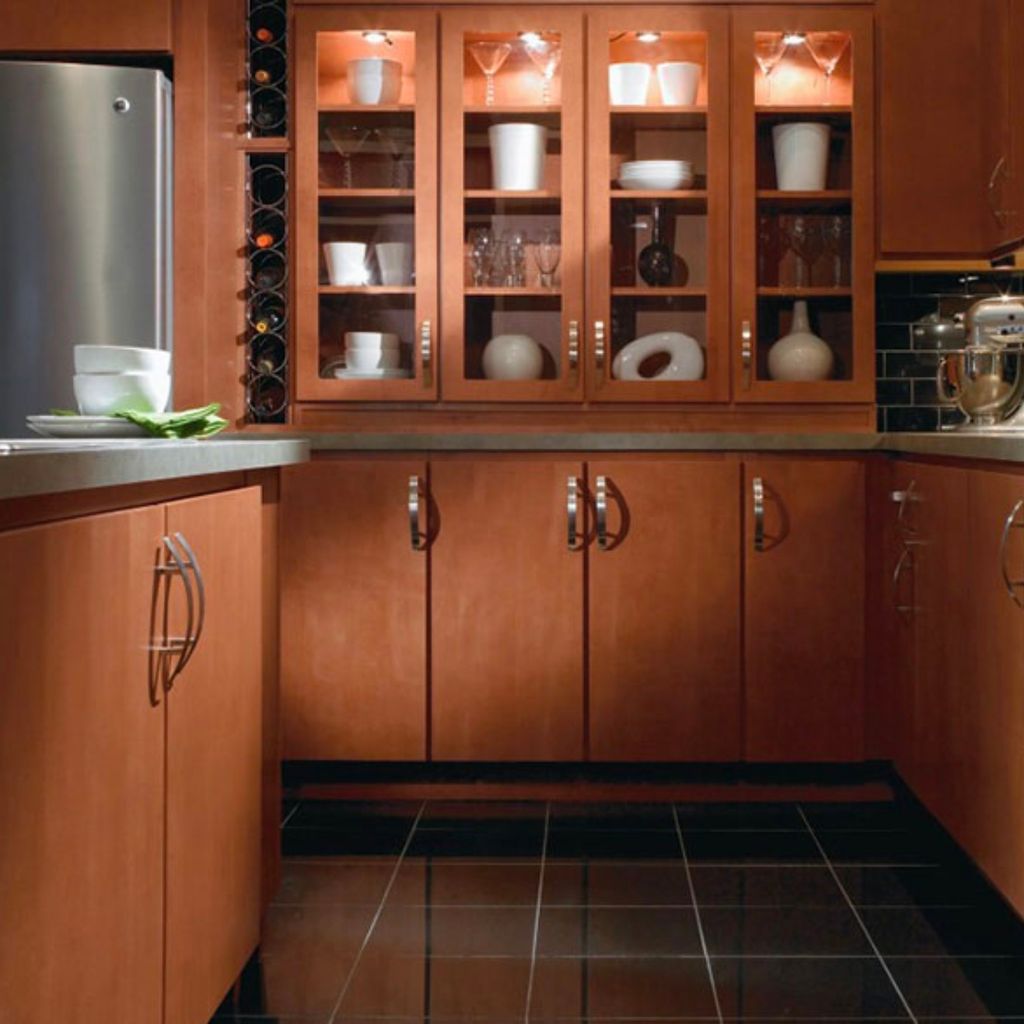
Maple Wood Kitchen Cabinets from @excelsiorkitchens
Maple wood is known for its smooth and uniform appearance, featuring a subtle grain pattern. It offers excellent durability and is resistant to warping, making it a reliable choice for kitchen cabinets. Maple cabinets can be stained in various colors or left natural for a light and contemporary look.
Pros of Maple Natural Wood Kitchen Cabinets:
- Smooth and Uniform Appearance: Maple wood is known for its fine, smooth texture and uniform grain pattern, giving it a clean and contemporary look. It provides a sleek and polished appearance to your kitchen cabinets.
- Durability: Maple wood is a dense and sturdy hardwood, making it highly durable and resistant to dents and scratches. It can withstand the rigors of daily use and maintain its beauty over time.
- Versatility in Finishes: Maple wood can be stained in various colors, allowing you to achieve the desired aesthetic for your kitchen cabinets. It takes stains exceptionally well, providing a consistent and even coloration.
- Light and Bright Aesthetic: The natural light color of maple wood cabinets can brighten up your kitchen space, creating an open and inviting atmosphere. It works well in smaller kitchens or areas with limited natural light.
- Resistant to Warping: Maple wood is less prone to warping or swelling when exposed to moisture or changes in humidity compared to other wood species. This characteristic makes it a reliable choice for kitchens, where humidity levels can fluctuate.
Cons of Maple Natural Wood Kitchen Cabinets:
- Higher Cost: Maple wood is generally more expensive than some other wood types used for kitchen cabinets. The higher cost is due to its durability, density, and popularity.
- Limited Natural Color Variation: Unlike woods with more pronounced grains, such as oak, maple wood has a more subtle and uniform grain pattern. While this can be a positive feature for those seeking a clean and contemporary look, it may lack the natural color variation and character found in other wood species.
- Sensitive to Sunlight: Over time, exposure to direct sunlight can cause maple wood to darken or develop a yellowish hue. This effect can be minimized by using protective coatings or window treatments to reduce UV exposure.
- Less Distinctive Grain: If you prefer a prominent and noticeable grain pattern in your kitchen cabinets, maple wood may not be the best choice. Its grain is more subtle, which may not appeal to those seeking a more rustic or traditional look.
- Maintenance of Light Color: Light-colored maple cabinets may require more frequent cleaning and maintenance to prevent visible stains or discoloration. Regular wiping and cleaning with mild detergents can help maintain their bright appearance.
Considering these pros and cons will help you determine whether maple wood kitchen cabinets are the right fit for your kitchen. Assess your design preferences, budget, and specific needs before making a final decision.
3. Cherry
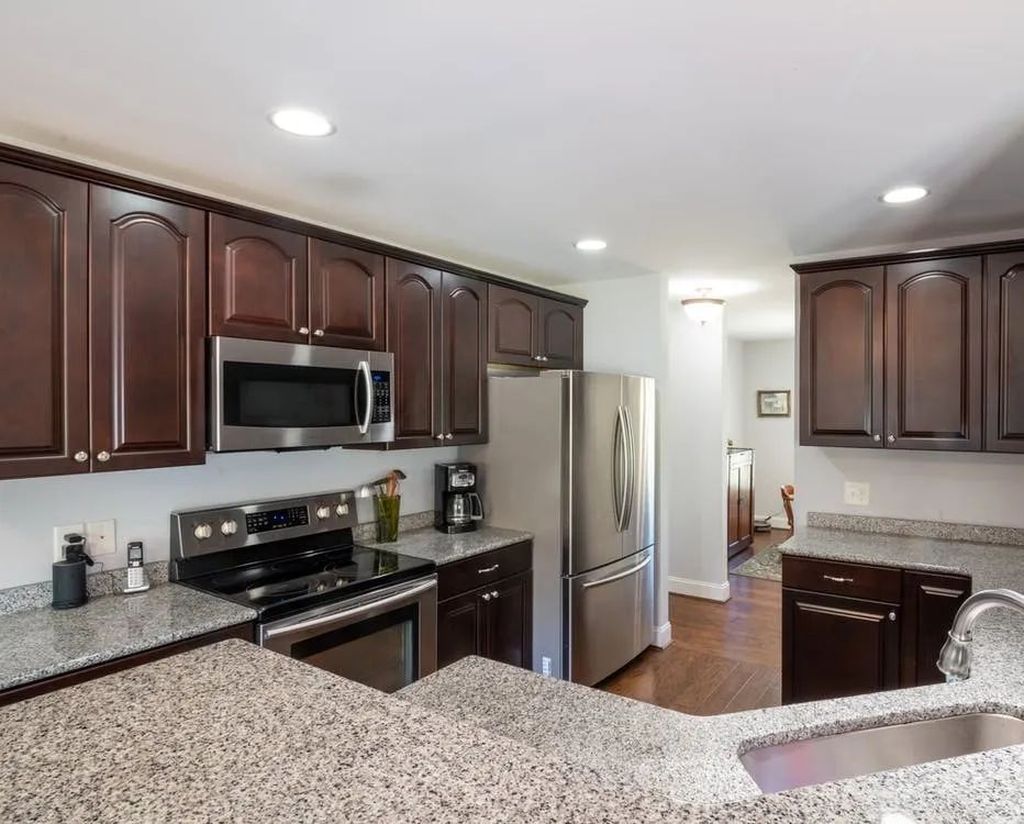
Cherry Wood Kitchen Cabinets from @geckitchencabinetsdepot
Cherry wood is prized for its rich, reddish-brown hue and smooth texture. It has a natural luster that deepens over time, adding elegance and sophistication to any kitchen. Cherry cabinets create a classic and luxurious ambiance, perfect for traditional or formal kitchen designs.
Pros of Cherry Natural Wood Kitchen Cabinets:
- Rich and Elegant Appearance: Cherry wood is prized for its natural reddish-brown hue, which deepens and develops a rich patina over time. The warm and luxurious appearance of cherry wood cabinets adds a touch of elegance and sophistication to any kitchen.
- Unique Grain Pattern: Cherry wood exhibits a beautiful and distinctive grain pattern, with swirls and knots that enhance its visual appeal. This natural character makes each cherry wood cabinet unique and adds a sense of craftsmanship to your kitchen.
- Durability: Cherry wood is a durable hardwood that is resistant to dents and scratches. It can withstand the demands of daily use, making it a reliable choice for kitchen cabinets that will maintain their beauty for years.
- Versatility in Finishes: Cherry wood can be stained in various shades, from lighter golden tones to darker reddish-brown hues. This versatility allows you to customize the color of your cabinets to match your desired style and complement your kitchen décor.
- Ages Gracefully: Cherry wood undergoes a natural aging process, deepening in color and developing a richer patina over time. This characteristic adds to the timeless beauty of cherry wood cabinets and can increase their value.
Cons of Cherry Natural Wood Kitchen Cabinets:
- Higher Cost: Cherry wood is generally more expensive compared to other wood species used for kitchen cabinets. The cost reflects its desirability, durability, and natural beauty.
- Sensitivity to Light: Cherry wood is sensitive to light exposure, especially direct sunlight. Over time, exposure to sunlight can cause the wood to darken or change in color. Using window treatments or protective coatings can help minimize this effect.
- Potential Color Variation: Cherry wood can have natural color variations, including light and dark areas. Some individuals appreciate this variation as it adds depth and character, while others prefer a more uniform appearance. It’s essential to consider personal preferences and select cherry wood cabinets that align with your desired aesthetic.
- Maintenance of Darker Finishes: Darker-stained cherry wood cabinets may require more frequent maintenance to keep them looking their best. Regular dusting, cleaning, and occasional polishing are necessary to maintain their rich appearance and prevent visible dust or fingerprints.
- Compatibility with Modern Styles: While cherry wood cabinets have a timeless appeal, their rich and traditional appearance may not suit every kitchen style or design preference. It’s important to consider whether cherry wood cabinets align with your overall vision for your kitchen’s aesthetics.
Considering these pros and cons will help you determine whether cherry wood kitchen cabinets are the right choice for your kitchen. Assess your design preferences, budget, and maintenance expectations before making a final decision.
Design Styles for Natural Wood Kitchen Cabinets
The design style of your kitchen cabinets sets the tone for the entire space. Here are three popular design styles for natural wood kitchen cabinets:
1. Traditional Natural Wood Kitchen Cabinets
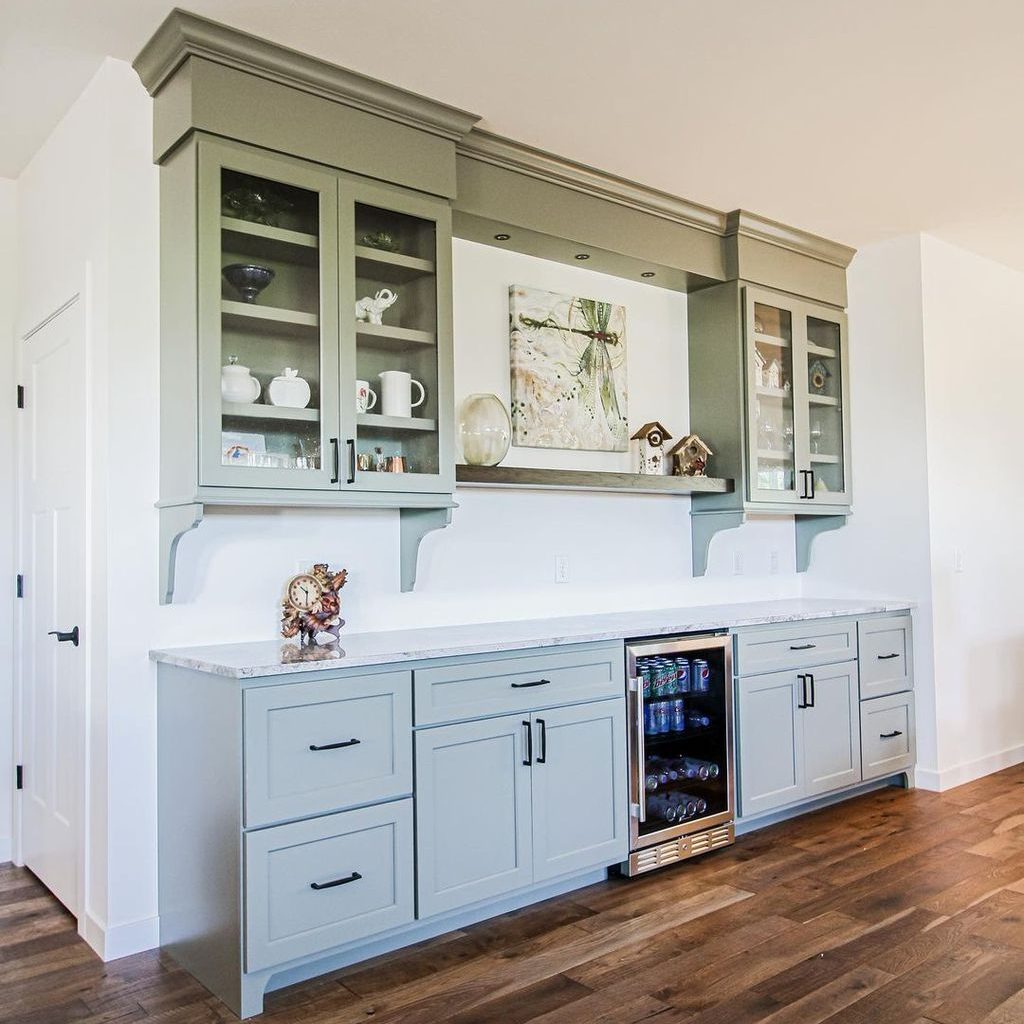
Traditional Kitchen Cabinets from @traciraunerdesign
Traditional kitchen cabinets embrace timeless elegance and intricate details. These cabinets often feature raised panel doors, ornate molding, and decorative accents. Natural wood in warm tones, such as oak or cherry, complements the traditional style, creating a refined and welcoming kitchen.
2. Rustic Natural Wood Kitchen Cabinets
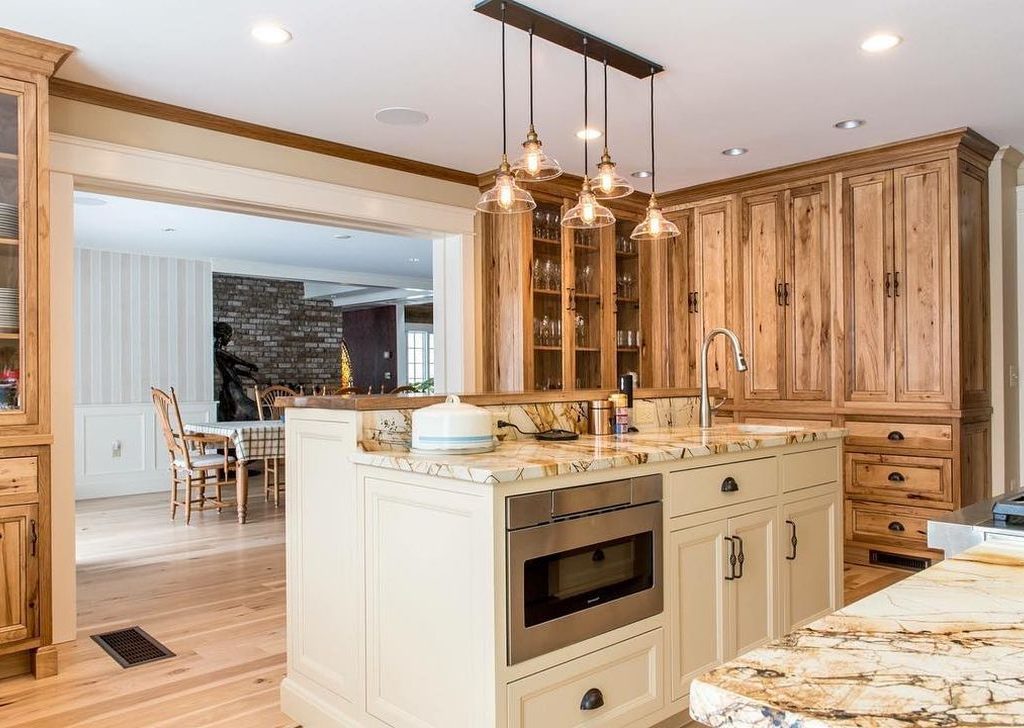
Rustic Kitchen Cabinets from @cypressdesignco
Rustic kitchen cabinets exude a charming and cozy atmosphere with their natural woodgrain and rugged appeal. These cabinets often showcase the natural beauty of wood, with knots and imperfections adding to their rustic charm. A popular choice for rustic kitchens is distressed oak or reclaimed wood cabinets, which evoke a sense of nostalgia and country living.
3. Modern Natural Wood Kitchen Cabinets
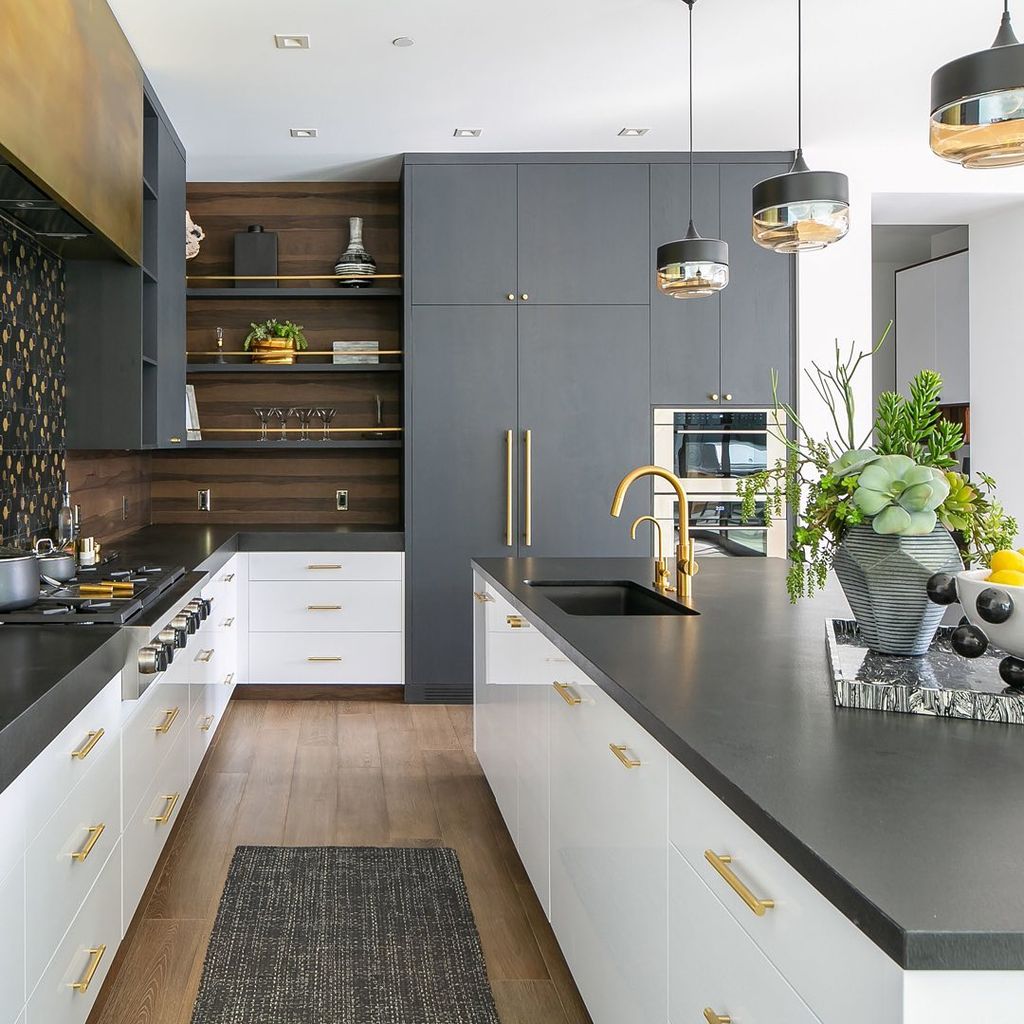
Modern Kitchen Cabinets from @ziethingcabinets
For a sleek and contemporary look, modern kitchen cabinets featuring natural wood can be an excellent choice. Clean lines, minimalist designs, and smooth finishes are characteristic of modern style. Light-colored wood, such as maple, is often preferred to create a bright and airy atmosphere. The combination of natural wood and modern design elements brings a touch of warmth and nature into the kitchen.
4. Contemporary Natural Wood Kitchen Cabinets
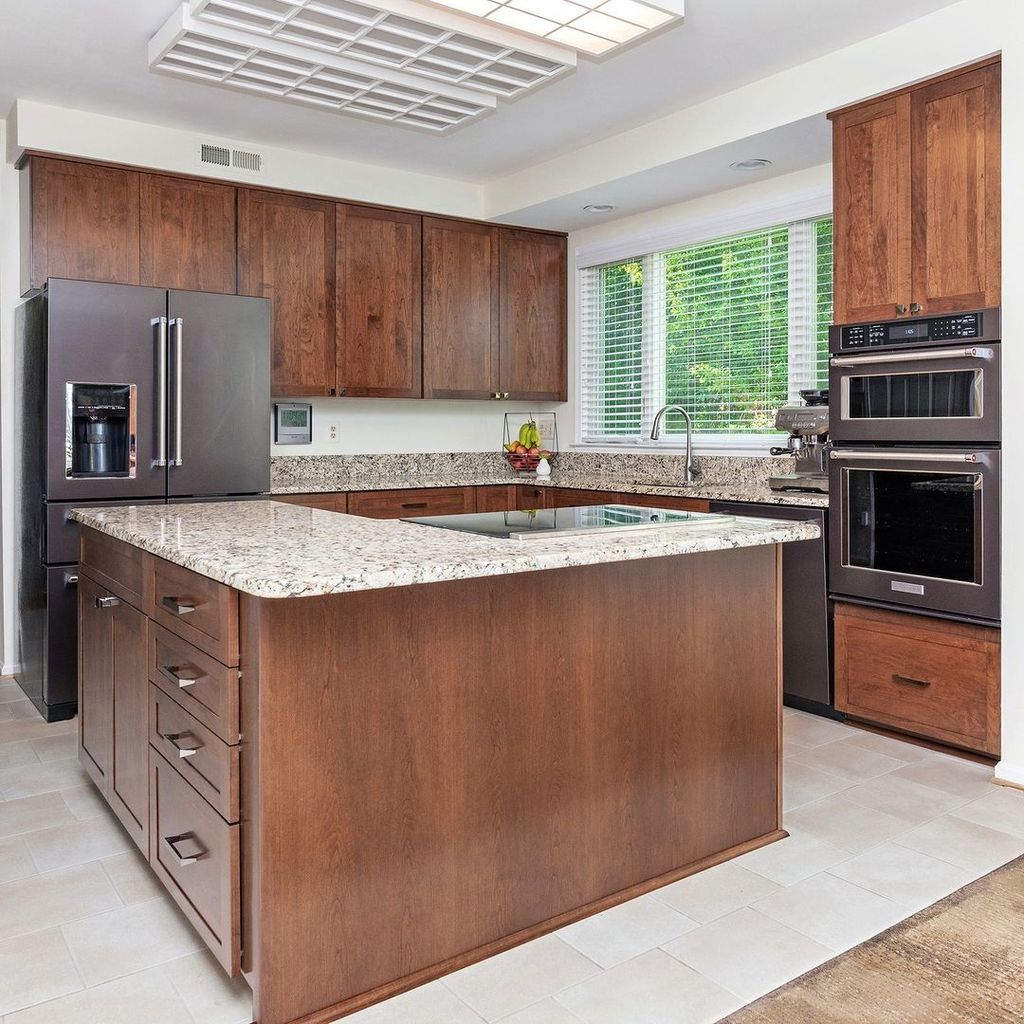
Contemporary Kitchen Cabinets from @kitchensaver
In modern kitchen design, contemporary natural wood cabinets have gained popularity for their unique blend of warmth, sophistication, and clean lines. These cabinets offer a fresh and stylish approach, combining the natural beauty of wood with sleek and minimalist design elements.
Maintenance and Care Tips
To ensure the longevity and beauty of your natural wood kitchen cabinets, proper maintenance and care are essential. Here are a few tips to keep them in optimal condition:
- Regular Cleaning: Wipe the cabinets with a soft cloth or sponge using a mild detergent or wood cleaner. Avoid abrasive cleaners that can damage the finish.
- Avoid Excess Moisture: Clean up spills immediately and use coasters or placemats under wet items to prevent water damage.
- Gentle Handling: Avoid slamming cabinet doors and drawers, as it can cause structural damage. Use soft-close mechanisms if available.
- Avoid Harsh Chemicals: Avoid using harsh chemicals, bleach, or ammonia-based cleaners, as they can discolor or damage the wood.
- Regular Inspection: Periodically inspect for signs of wear, loose hinges, or damaged areas. Address any issues promptly to prevent further damage.
Cost Considerations
When considering natural wood kitchen cabinets, it’s important to factor in the cost. The price can vary based on the wood species, cabinet size, quality, and additional features. Generally, oak cabinets are more affordable, while cherry cabinets tend to be on the higher end of the price range. It’s recommended to obtain multiple quotes from reputable suppliers to compare costs and find the best option that fits your budget.
Environmental Sustainability
If you prioritize sustainability in your home design, natural wood kitchen cabinets can align with your values. Opting for cabinets made from sustainably sourced wood or certified by organizations such as the Forest Stewardship Council (FSC) ensures responsible forestry practices. Additionally, choosing cabinets made with low-VOC (Volatile Organic Compounds) finishes contributes to indoor air quality and reduces environmental impact.
Conclusion
Natural wood kitchen cabinets offer a wide range of styles to suit various design preferences. From traditional elegance to rustic charm and modern sophistication, there is a natural wood cabinet style for every kitchen. Remember to maintain and care for your cabinets properly to preserve their beauty and functionality. Consider the cost and environmental sustainability aspects when making your decision. Embrace the warmth and character that natural wood kitchen cabinets bring, and enjoy a kitchen that truly reflects your style and personality.
